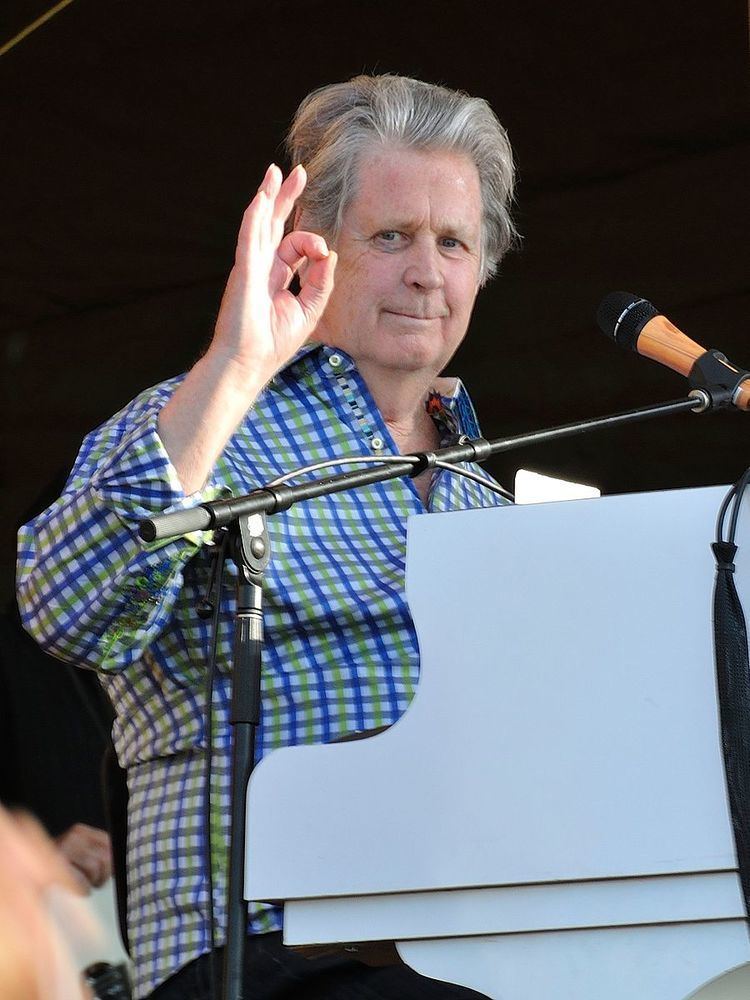Other names Ork-pop | Cultural origins Mid 1990s | |
 | ||
Stylistic origins Indie popindie rockloungealternative rockcocktailbaroque pop Typical instruments Stringshornspianochamberlinvibraphone | ||
Chamber pop (also "ork-pop", short for "orchestral pop") is a subgenre of indie pop or indie rock which grew in the mid 1990s as a reaction against the fuzz distortion and "lo-fi aesthetic" prominent in alternative music. Inspired partly by the era's lounge music revivalism, chamber pop is typified by the use of strings, horns, and piano, and a dissociation from contemporary genres of the time, like grunge or electronica. The Beach Boys' Brian Wilson heavily influenced much of the genre, as did composer Burt Bacharach. Specific works that helped define the style include the Beach Boys' albums Pet Sounds (1966) and Smile (1966–67), as well as the majority of Louis Phillipe's productions for él Records (1984–89).
Contents
Definition and precursors
The combination of string sections and rock music has been called "symphonic pop", "chamber pop", and "ork-pop" (short for orchestral pop). Ork-pop refers to a branch of underground rock musicians who shared an affinity with the Beach Boys' 1966 studio album Pet Sounds, such as the High Llamas and bands from the Elephant 6 collective. According to CMJ's David Jerman, the name was the creation of rock critics, "encompassing everyone from fans of the Beach Boys to fans of Bacharach and Mancini". Chamber pop is stylistically diverse. Strongly influenced by the rich orchestrations of Burt Bacharach, Brian Wilson, and Lee Hazlewood, artists once again focused on melody and production. AllMusic states that the genre carries on the "spirit" of the baroque pop of the 1960s, while cultural writers Joseph Fisher and Brian Flota call it the "heir" to baroque pop. Another major source of influence was the singer Scott Walker. New York Daily News' Jim Farber summarizes; "think Donovan meets Burt Bacharach".
Newsmakers believes that the Beach Boys' Pet Sounds helped define chamber pop as "intimate, precisely arranged songs with rock's sweep but without its bluesy clamor." Following the album was the group's unfinished 1966–67 work Smile, a collaboration between Brian Wilson and lyricist Van Dyke Parks that also heavily influenced the genre. Author Carl Wilson (no relation) says that Brian's "pained vulnerability", "uses of offbeat instruments", "intricate harmonies", and "the Smile saga itself" became a common reference point for chamber pop bands. Just as they shared a love for Wilson, numerous ork-pop acts held an admiration for one another's work.
The majority of Louis Phillipe's productions for él Records embodied the sophisticated use of orchestras and voices that would define chamber pop. The genre's orchestration is typically more complex than rock music, making extensive use of brass and strings. Although modern rock groups like Smashing Pumpkins, Oasis, and R.E.M. occasionally used strings, their approach was considerably less intricate. The High Llamas' Sean O'Hagan commented: "There is this whole misconception that American college rock with twisted baseball hats and checked shirts is adventurous, but it's the most conformist, corporate thing out there. ... All these bands sound like Nirvana and Pearl Jam. It's a shame that it couldn't be discovered from the get-go for what it is. A lot of it is just very simple dumb-guy rock." Chamber pop was part of a larger trend which involved musicians who rejected traditional rock conventions, such as Tortoise and Stereolab, although those specific bands are not considered ork-pop. Chamber pop drew from the 1990s lounge music revival but avoided any influence from other contemporary styles like grunge, electronica, or alternative music, particularly the lo-fi hiss and distortion of the last.
Emergence and popularity
Fisher and Flota trace chamber pop to "at least" the mid 1990s, emerging in parallel to Shibuya-kei in Japan, which also revisited the trend of foregrounding instruments like strings and horns in its arrangements. According to Natalie Waliek of music retailer Newbury Comics, the then-"renewed interest in psychedelia" and the "overlap with the cocktail/lounge music thing, because that music [also] has orchestrations", likely contributed to the sale of ork-pop albums.
However, ork-pop acts were restricted to only a moderate degree of commercial success. The majority of musicians were aged beyond their early 20s, and many struggled to achieve significant retail or radio success compared to modern rock. In the past, record companies had helped facilitate large multi-instrumental bands by financing instruments like strings, horns, and keyboards on artists' albums, but this became rarer as time went on. Touring with full string and brass ensembles also proved difficult for some, which became another factor that prevented the genre's mainstream success.
In a profile of ork-pop, Rosen lists examples that include Yum-Yum, the High Llamas, Richard Davies, Eric Matthews, Spookey Ruben, Witch Hazel, and Liam Hayes (Plush). Matthews, who partnered with Davies for duo Cardinal, was considered a leading figure in ork-pop. Popmatters' Maria Schurr wrote in a retrospective review of Cardinal's eponymous 1994 debut album; "in some circles, [it has] been called the grunge era's answer to Pet Sounds, and, although it has not been as widely cited as the Beach Boys' classic, it has undoubtedly influenced more off balance indie popsters than one may expect." Music journalist Jim DeRogatis associates the ork-pop and chamber pop movement to bands like Yum-Yum, Cardinal and Lambchop.
2000s–present
By 2009, the term "chamber pop" had fallen to indiscriminate use: as songwriter/author Scott Miller suggests, it "made more sense applied to the Fleet Foxes than to other bands I've since seen it applied to". He also noted that Pet Sounds had become a ubiquitous object of comparison; "[If people] are happy about that, I have to pinch myself and reflect that I'd never thought I'd see the day." Treblezine's Brian Roster wrote that Grizzly Bear's album Veckatimest was a "landmark exploration of the changing landscapes of pop in 2009" that represented an attempt to create "a sort of abridged conclusion to chamber pop's earliest days".
